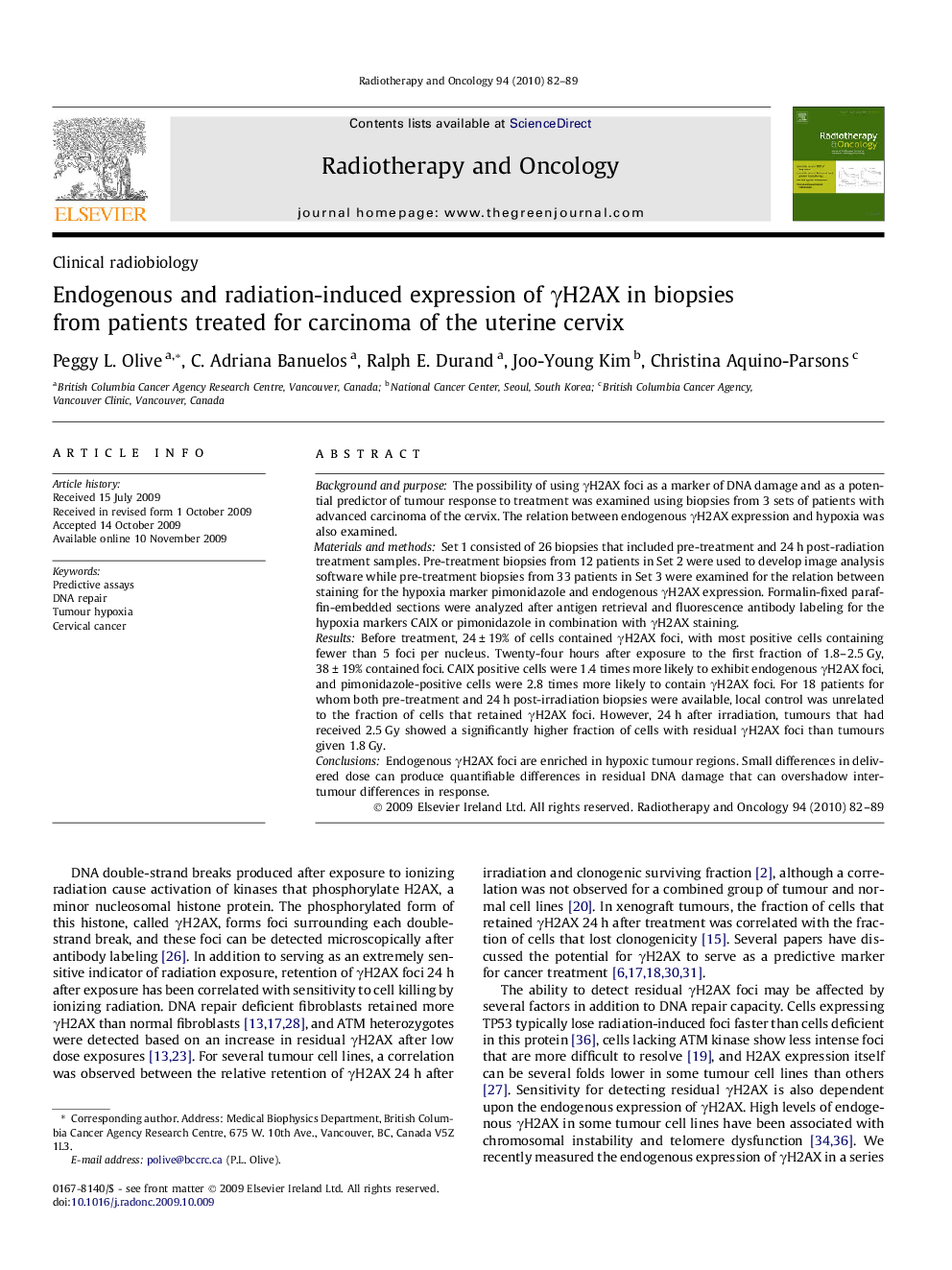| Article ID | Journal | Published Year | Pages | File Type |
|---|---|---|---|---|
| 2159531 | Radiotherapy and Oncology | 2010 | 8 Pages |
Background and purposeThe possibility of using γH2AX foci as a marker of DNA damage and as a potential predictor of tumour response to treatment was examined using biopsies from 3 sets of patients with advanced carcinoma of the cervix. The relation between endogenous γH2AX expression and hypoxia was also examined.Materials and methodsSet 1 consisted of 26 biopsies that included pre-treatment and 24 h post-radiation treatment samples. Pre-treatment biopsies from 12 patients in Set 2 were used to develop image analysis software while pre-treatment biopsies from 33 patients in Set 3 were examined for the relation between staining for the hypoxia marker pimonidazole and endogenous γH2AX expression. Formalin-fixed paraffin-embedded sections were analyzed after antigen retrieval and fluorescence antibody labeling for the hypoxia markers CAIX or pimonidazole in combination with γH2AX staining.ResultsBefore treatment, 24 ± 19% of cells contained γH2AX foci, with most positive cells containing fewer than 5 foci per nucleus. Twenty-four hours after exposure to the first fraction of 1.8–2.5 Gy, 38 ± 19% contained foci. CAIX positive cells were 1.4 times more likely to exhibit endogenous γH2AX foci, and pimonidazole-positive cells were 2.8 times more likely to contain γH2AX foci. For 18 patients for whom both pre-treatment and 24 h post-irradiation biopsies were available, local control was unrelated to the fraction of cells that retained γH2AX foci. However, 24 h after irradiation, tumours that had received 2.5 Gy showed a significantly higher fraction of cells with residual γH2AX foci than tumours given 1.8 Gy.ConclusionsEndogenous γH2AX foci are enriched in hypoxic tumour regions. Small differences in delivered dose can produce quantifiable differences in residual DNA damage that can overshadow inter-tumour differences in response.
